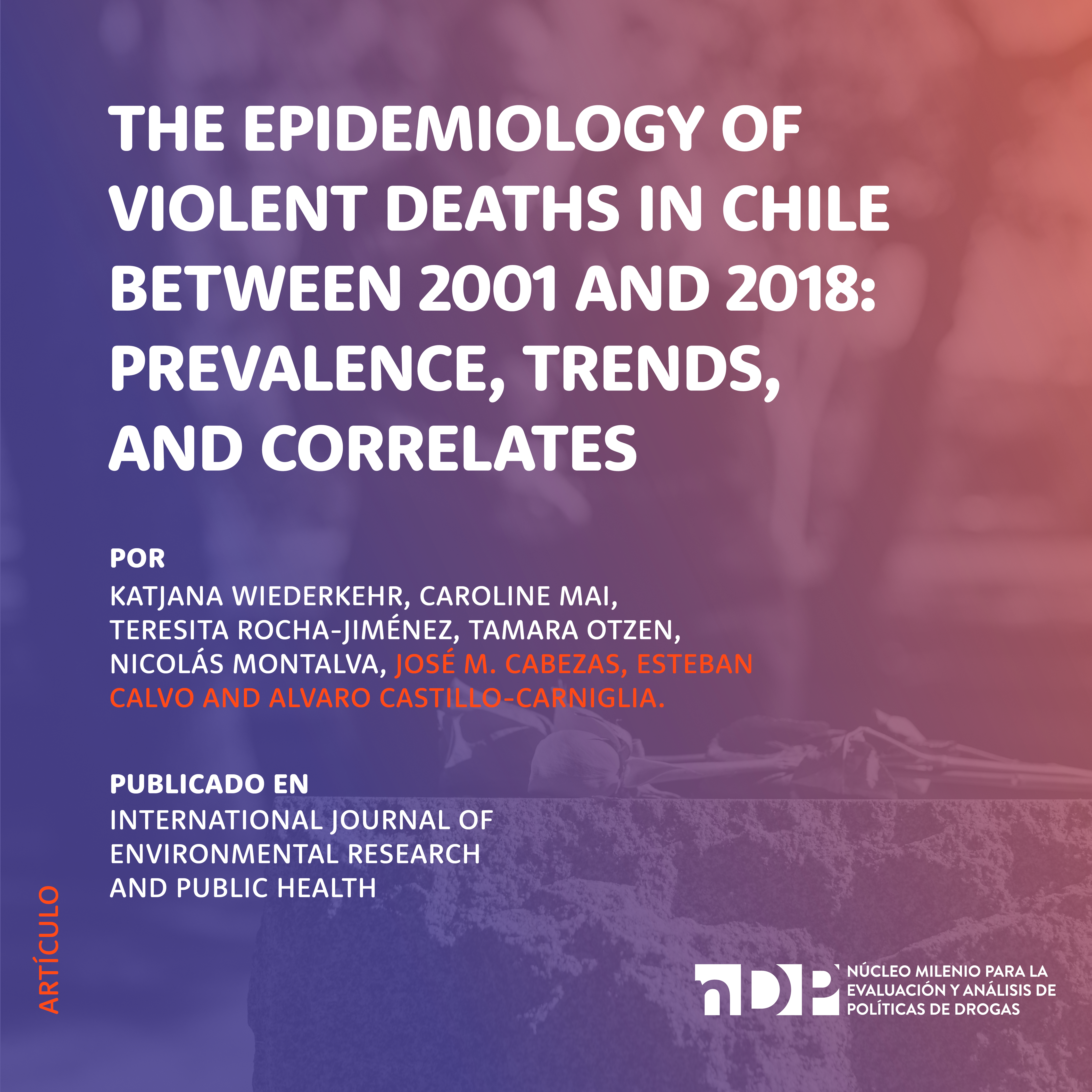bstract: Background: Despite its enormous health and social burden, there are limited published studies describing the epidemiology of violent deaths in Chile. We described violent mortality rate trends in Chile between 2001 and 2018, its current spatial distribution and ecological level correlates.
Methods: A population-based study using publicly accessible data. We calculated age-adjusted mortality rates per 100,000 persons for sex, age, intention, and mechanism of death. Next, we used linear regression to estimate time trends for sex and intention. We then employed hierarchical Poisson analyses to model the spatial distribution across 345 municipalities and the influence of six ecological level variables. Results: The average rate of violent death in Chile between 2001 and 2018 was 15.9 per 100,000 people, with the majority (70.3%) of these attributed to suicide. Suffocation was the most common mechanism of death for suicide (82.3%) and cut/pierce for homicide (43.1%), followed by firearm (33.2%). Violent deaths are trending downward in Chile across all categories except suicides by women, which have remained stable. Poverty rates and urban population were positively associated with violent mortality rates. Conclusions: Although violence-related deaths seem to be decreasing, disparities across gender, age group, and geographic location may have continuing effects on mortality rates.
Keywords: mortality; violence; homicide; suicide; Chile


